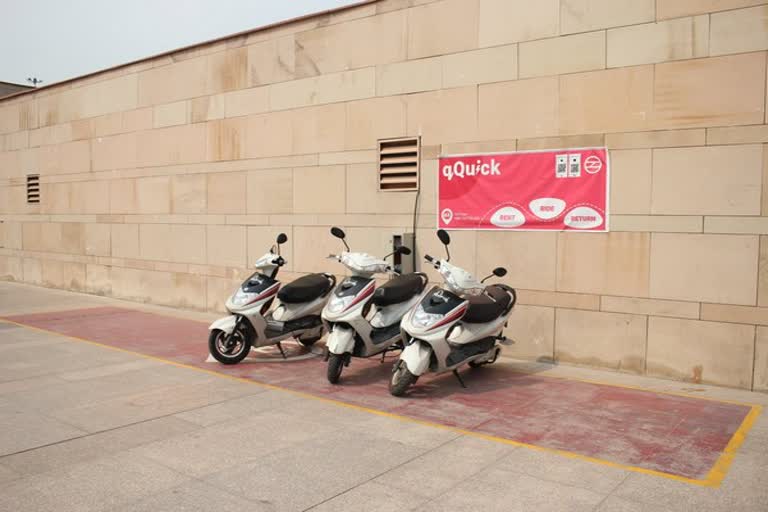New Delhi: Sales of electric two-wheelers (e-2W) in India remains tepid despite government's subsidy and near-term outlook largely remains unchanged, according to ratings agency Icra.
Under the three year tenure of FAME-II scheme -- FY20-FY22-- e-2W sales have been only 2 per cent of the targeted 10 lakh unit sales as on September 30, 2020 halfway mark, Icra said in a statement.
"The demand and volumes of e-2Ws have witnessed a very lackadaisical growth in recent years despite the government's thrust on adoption of electric vehicles (EV). Despite an unprecedented demand shock caused by the pandemic, the outlook for the e-2W remains largely unchanged in FY2021 due to a low base," the ratings agency added.
Citing a nationwide survey of 16 e-2W dealerships in November, Icra said the stringent eligibility criteria set for claiming the subsidy under the second phase of Faster Adoption and Manufacturing of Hybrid and Electric Vehicles (FAME-II), the Centre's flagship scheme, have been a deterrent – mainly due to a minimum localisation requirement and exclusion of lead-acid based e-2W for subsidy.
"In addition, lack of consumer awareness (regarding government subsidy), low acceptability led by lack of product knowledge and after-sales service concerns have been dominant reasons for the scheme's lacklustre performance," it added.
The FAME-II, scheme aimed to push faster electric vehicle (EV) adoption crossed the halfway mark of its three-year tenure (FY2020-FY2022), on September 30, 2020. However, it has managed to achieve only 2 per cent of its target (out of covering 10 lakh e-2Ws) sales during the period, Icra said.
Commenting on the situation, Icra Vice-President Shamsher Dewan said the e-2Ws segment was expected to witness faster penetration among all segments of the automobile market, given the favourable economics and limited reliance on a widespread charging infrastructure.
Read more: DGGI detects fraudulent transactions in Maharashtra
"However, e-2W sales vis-à-vis targets set under FAME II have been tepid so far, with the same constituting less than 1 per cent of total two-wheelers (2W) sold in FY2020 in India. While the e-2W sales reported a 21 per cent year-on-year (YoY) growth to 1.5 lakh units in FY2020 (first year of scheme) the number of e-2Ws which availed FAME-II subsidy plummeted," he added.
Dewan further said in the first half of FY21, the high-speed e-2W reported a 25 per cent (YoY) decline, primarily a result of the pandemic-led lockdowns. However, the sales data released by SMEV for the month of September 2020, which reported a 72 per cent YoY increase in sales of high-speed e-2W, augments the positive expectations of the dealers.
Announcement of EV policies by states and Union Territories like – Delhi, Telangana, and the Central Government's decision to allow sale of EVs without battery, could push growth in the near-to-medium term, he added.
Icra said while the practicality behind the FAME-II policy target of 10 lakh e-2Ws by FY2022 could be debated at this juncture, the COVID-19 pandemic has been an unpredictable variable which has altered all the best laid out plans.
"Although the increased preference for personal mobility, to ensure social distancing, bodes well for 2W sales in the near-term, the demand for e-2Ws could be impaired as consumers face income uncertainties," it added.
Nonetheless, the government's thrust on adoption of EVs, increasing awareness towards public health and clean energy continue to favour EV adoption in the long run. Multi-level policy support such as demand incentives and policy push like firm transition date will be imperative for the same, Icra added.
(PTI)



